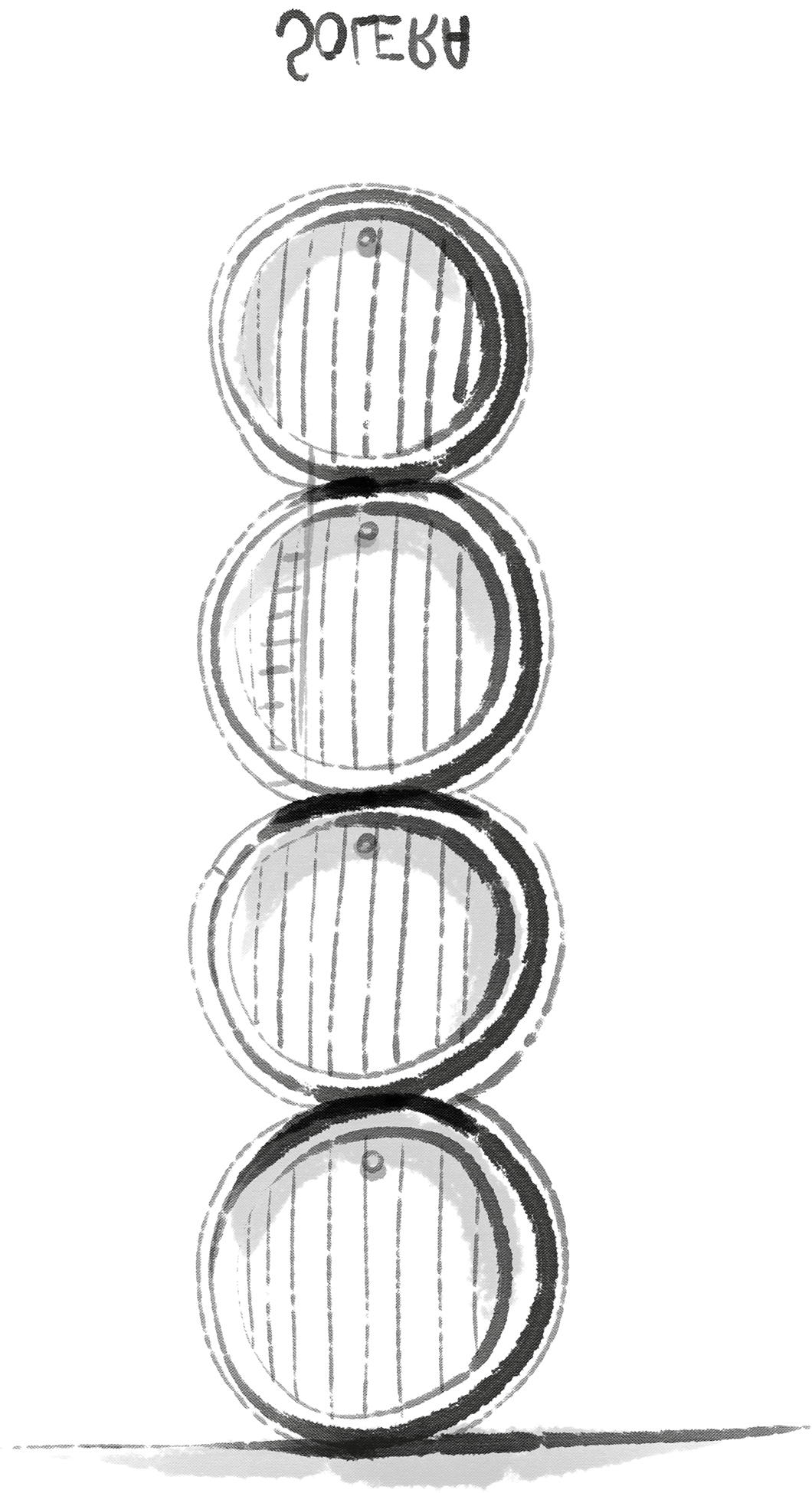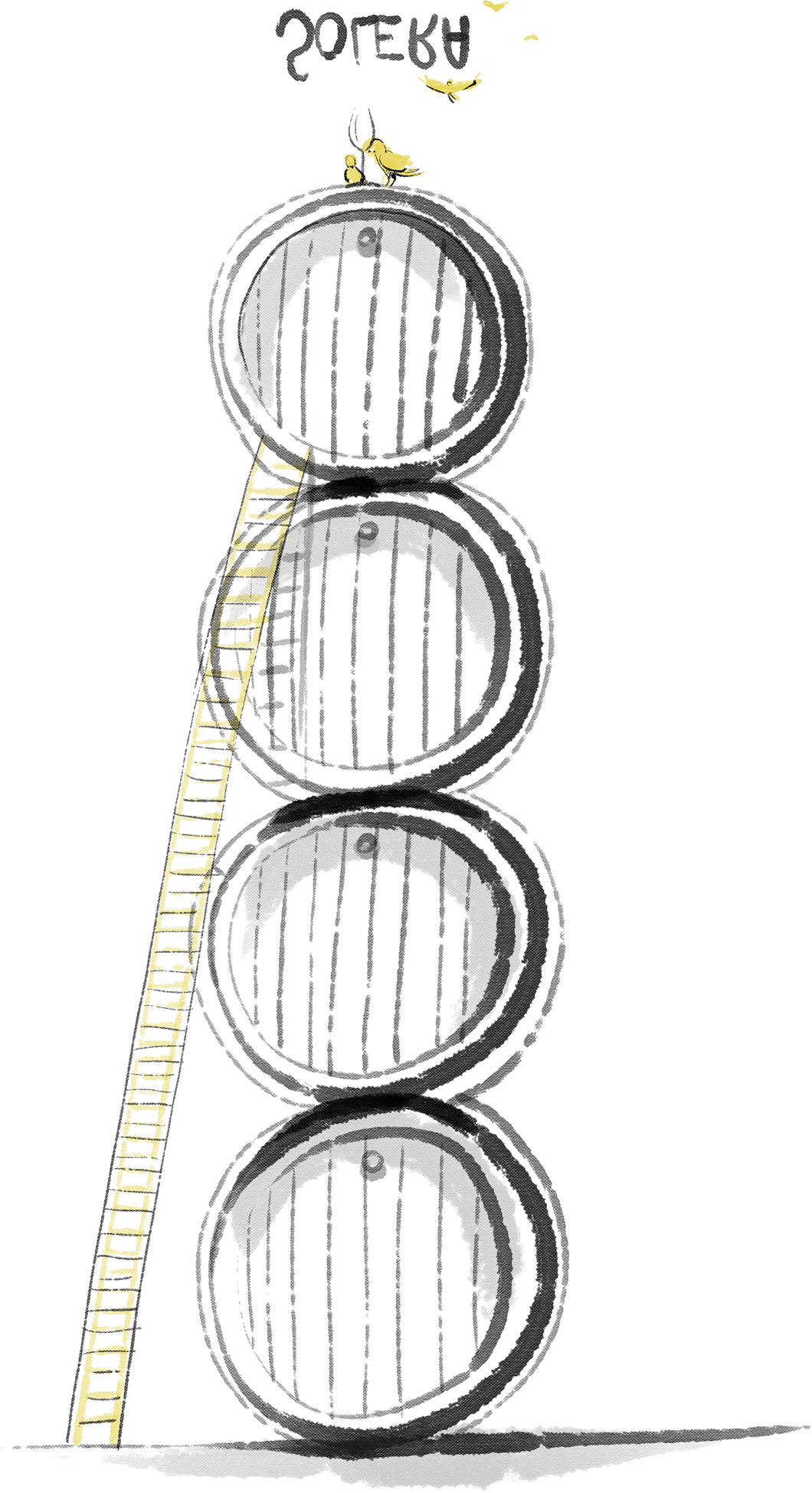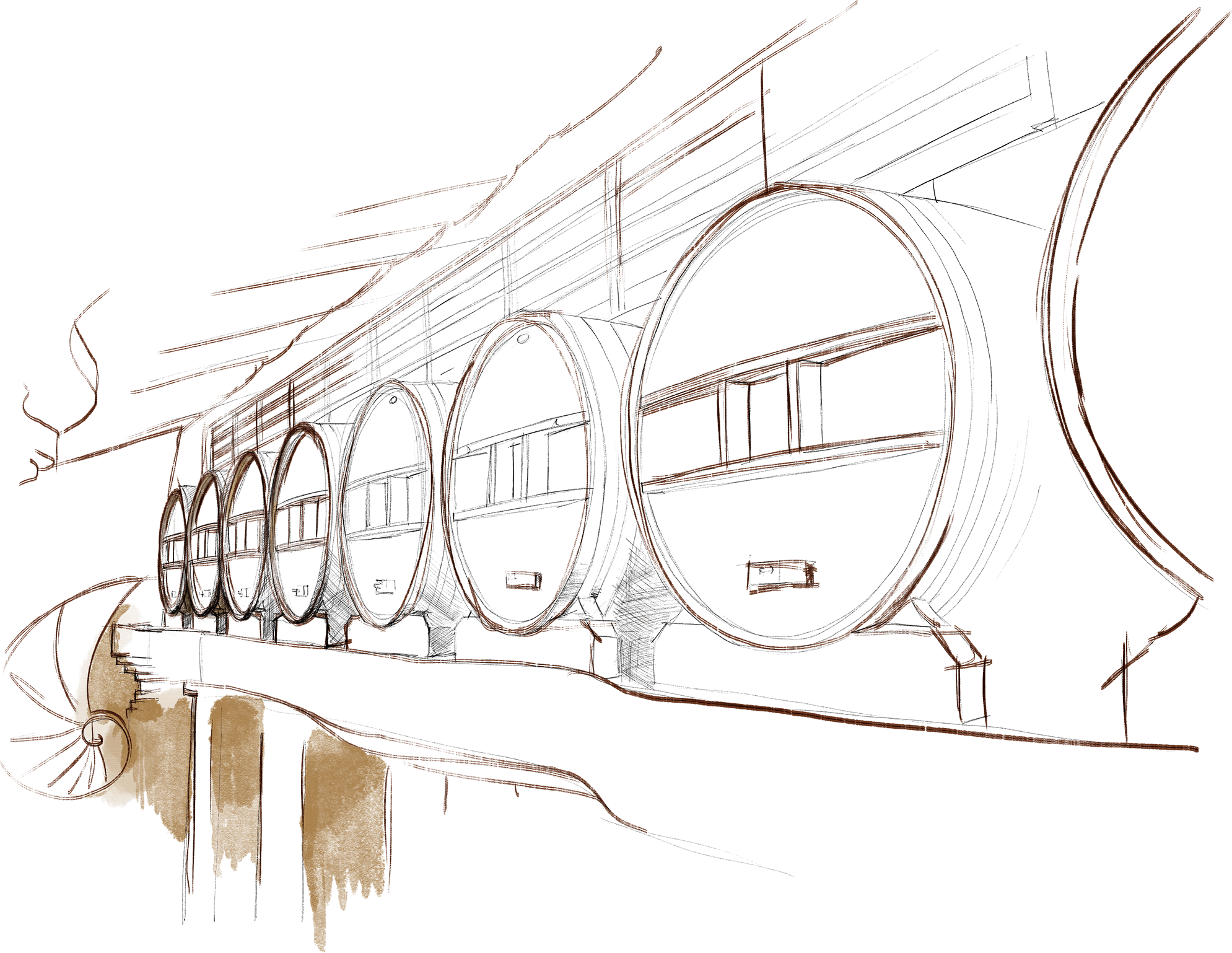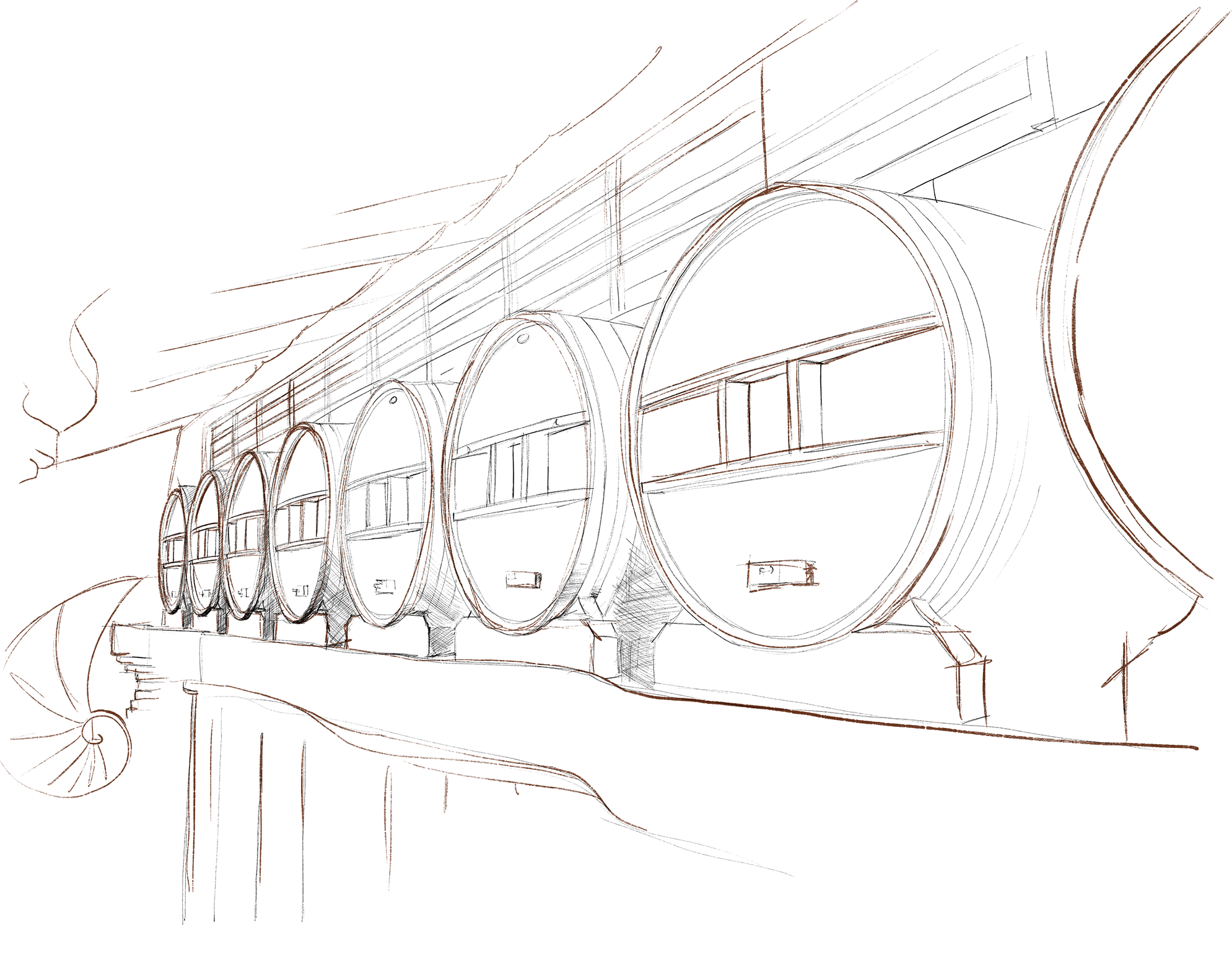Vinification at the winery
Producing the best!
In the Fleury family, harmony is a common theme in our work, found in both the vines and the wines. The pressing of grapes and the vinification follow our own guidelines which preserve and enhance fruit flavors. Afterwards, the bottling process is preferably done on the “fruit days”.

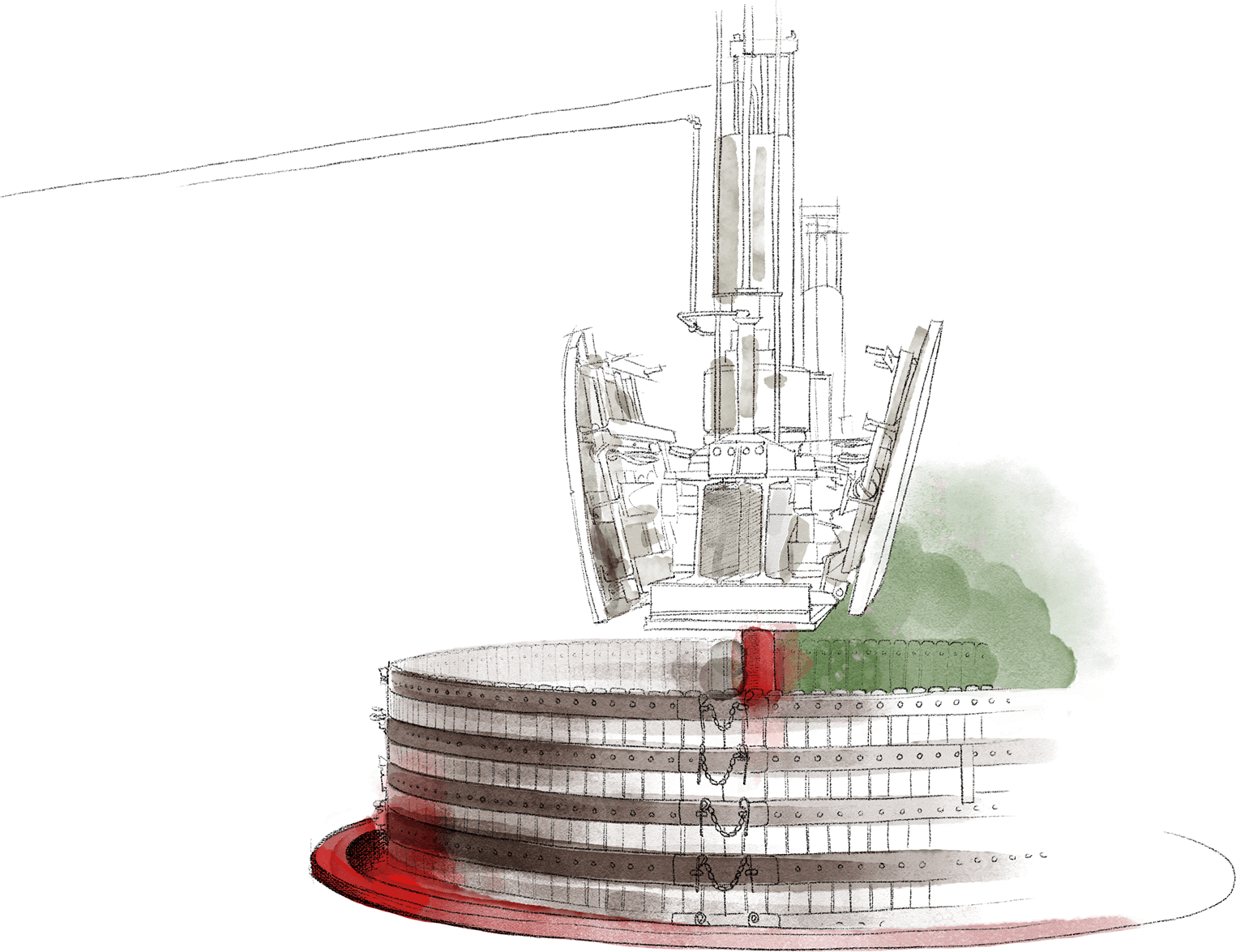
“Assemble a palette
of characteristics reflecting
each terroir.”

When it comes to pressing the grapes past and present are combined in the form of tradition and innovation, respectively. We use two traditional wooden vertical wine presses, each of which have a capacity of up to 4000 kg. In 2004, an entirely automatic press with a slanted tray was added to our growing wine pressing centre and winery.
After the grapes are handpicked in the fall(18) the grapes are immediately pressed throughout the day. The must (juice and crushed grapes) is then transferred into a vat that is designed to function mainly by gravity. Since 1989, and even more so when we replaced our old enameled vats in 2018, we separate each vineyard parcel into different vats. This demanding approach allows us to track the yearly quality of the grapes more closely. Just like a painter with his palette of colors, we can assemble our future cuvées using grapes that have acquired characteristics from different terroirs and history.
- 18 - The dates of the harvest
Traditionally the harvest took place in September, however due to climate change it takes place more and more often in the month of August. This was the case in 1976, 2003, 2007, 2011, 2017 2018, 2019 and 2020.
An inverted solera
After the fermentation takes place, the wine is aged on its lees until the spring. The clear wines are then blind tasted right after the spring equinox. But it is only after a second tasting at the end of April or early May which gives the family time to reflect and decide on the finial blends for the different wines (from the millésimes to our renowned Blanc de Noirs and Fleur de l’Europe). These cuvées are a blend between wines from the most recent harvest and from our reserve. A portion of this blend is then kept as a reserve wine for next year’s assembly. We have been using this method since 2007, called an “inverted solera”(19).
- 19 - Inverted Solera
Solera is a wine aging technique which originated in Spain. In this process, barrels of wine are stacked one on top of another, in several rows. The bottom row is called the “Solera”, the upper rows are called successively first “criadera”, second “criadera”, etc. The oldest wine is at the bottom in the solera barrels; the higher the level, the younger the wine. After each racking, the wines are blended with residual wines in the level below.
In Champagne, where the solera technique is rare, the process consists of adding wine each year from the new harvest to compensate wine lost after racking the Solera, which is a blend of older vintages. This technique allows the old wines to “educate” the younger wines, producing champagne of consistent quality, which varies only slightly from one year to the next.
At Champagne Fleury, we have adapted the solera technique by inverting the proportions: our solera is composed mainly of wines from the most recent harvest (70%) to which we add 30% reserve wines (which are already respective blends from the previous year). These proportions are not fixed and can vary more or less 10% each year. Our solera system is also spatially inverted, because our barrels are not placed directly on the floor, but rather 3 meters off the ground !
Source : https://www.plus-de-bulles.com/fr/guide/c/la-solera-en-champagne
“A slow aging process that is
in fact a symbolic return to the earth”
Applying biodynamic methods result in wines with an improved balance between sweetness and acidity compared to other wines. In our Domain, these characteristics allow us to leave the bottles to age in our cellar for a longer time of 3 to 5 years for the Blanc de Noirs, Fleur de l’Europe and Rosé, and 6 to 10 years for the Millésimes. This slow aging process that is in fact a symbolic return to the earth, an essential step before revealing the wine during the tasting. Aging before beginning a new life symbolises another cycle of nature and of the cosmos…
“Growing old to be reborn is also
cycle of nature and the cosmos…”

Since 1992, a few of our vintages are bottled with a traditional cork held with a square clip, which is carried out between bottling and disgorgement (a process that removes all the dead yeast). This is how it was done a century ago; it is now very unusual in Champagne. Comparative studies have shown that aging the wine with a cork leads to micro-oxygenation that reveals complex aromas, restoring the pure flavors from the vintage’s production year. The purity and subtlety of nature…
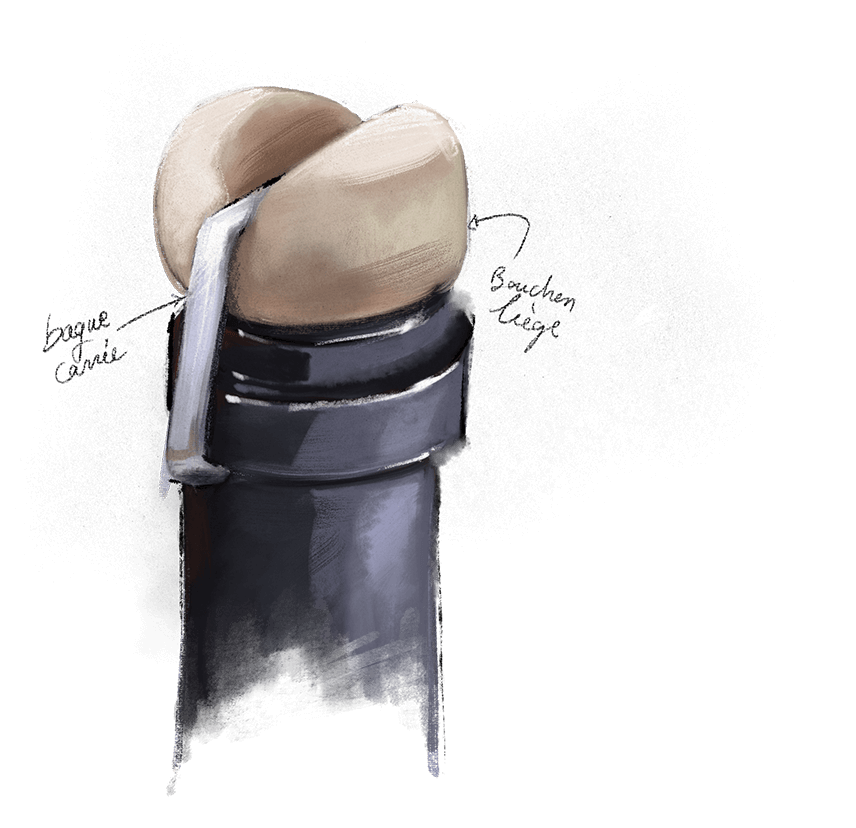
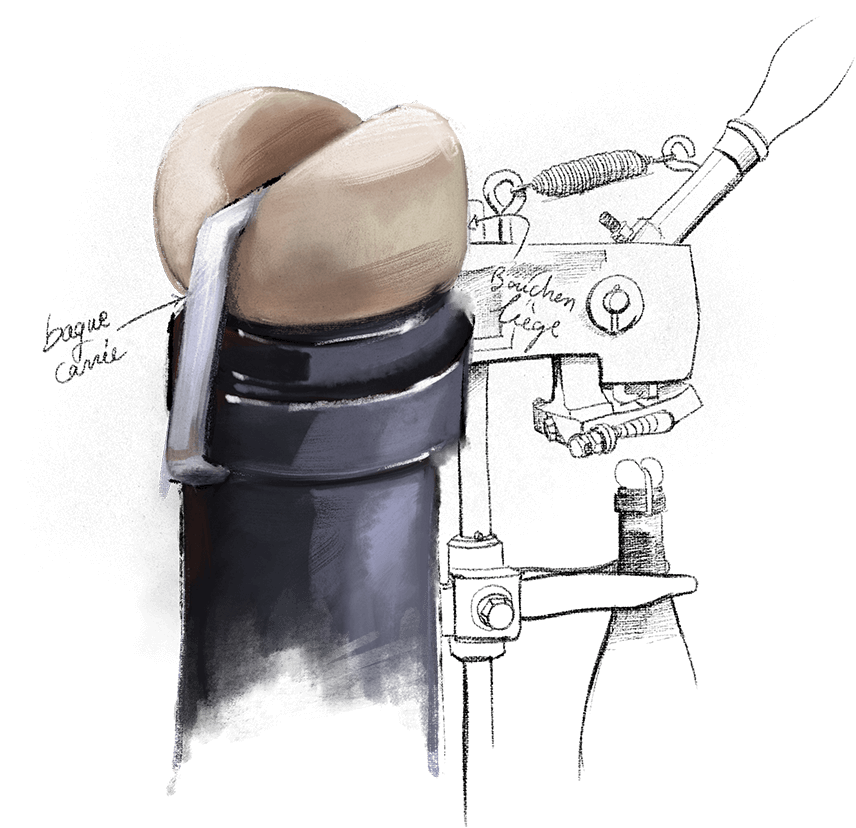
The Wine Library/Oenothèque : the time vault
Our most recent development to entice visitors is the creation of the “Time Vault.” A gallery constructed to showcase our reserve wine barrels: It is a real wine library! A place that is made lively through tastings and tours and its original architecture and decoration, it is equally a peaceful haven to store both out newest and oldest vintages.
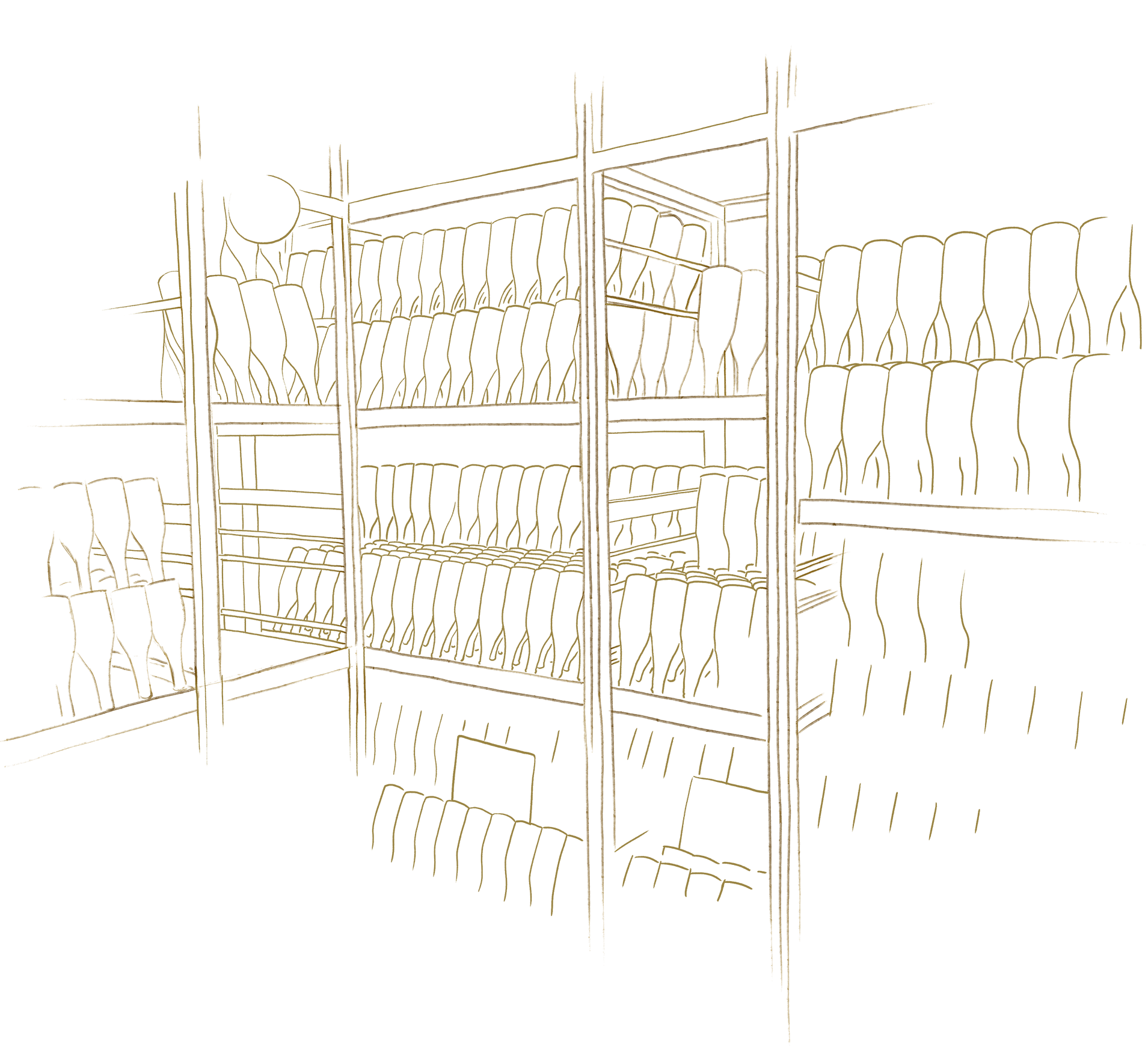
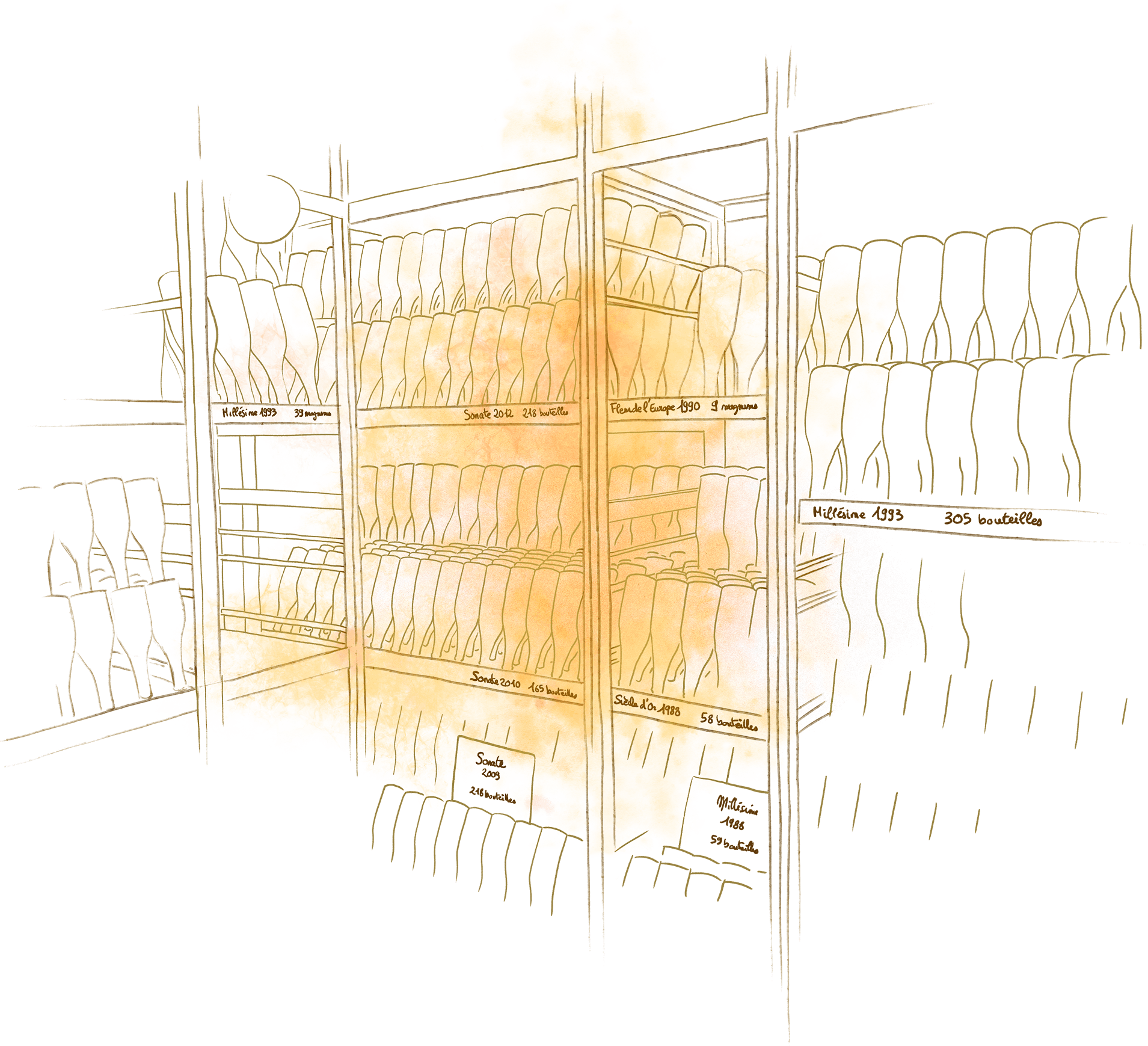
The “oenothèque/wine library” was inaugurated in April 2019. The vault is made with elements that are essential for champagne making: columns made from travertine stone (one of the first sedimentary rocks dating from hundreds of million of years ago, just like our clay-limestone soil from the kimmeridgian period) and cork (a noble and mysterious material that is crucial for the completion of a champagne bottle).
As soon as you enter, your eyes are drawn to the decoration at the back of the cellar. A golden spiral actively symbolises the dynamic principles of regeneration with symmetry and balance. It is the Fibonacci sequence linked to the golden number(20). The small vaults on the first floor are built using the local cubit, a unit of measurement calculated according to the golden ratio and the latitude of the location.
- 20 - The Fibonacci Sequence
The Fibonacci sequence, named after the Italian mathematician, who discovered the law that, with the exception of the first two, any number is equal to the sum of the previous two: 1, 2, 3, 5, 8, 13, 21, 34, 55, 89, 144.
The ratio of two successive numbers tends towards the value of the golden ratio (ϕ ≈ 1.61803...). The golden ratio, also called "divine proportion", "golden section" or "golden section", has been used for pyramids, Greek temples (Parthenon facade), Gothic cathedrals, paintings (Renaissance paintings), sculptures.
- 21 - Zodiac Circle
Zodiac comes from the Greek word “zodiakos” which means "circle of small animals”
We also feature the imagery of the earth surrounded by the circle of the zodiac(21) On this circular band we can observe the movements of the Sun and planets of the solar system in an ecliptic that crosses the 12 constellations(22), each which influence life on earth and are used in biodynamics.
Precious and semi-precious stones are placed in front of each sign of the constellations.
All together as one they resonate with the forces of life and give a feeling of balance and harmony to the cellar.
- 22 - 12 Constellations
The zodiac is divided into 12 constellations which corresponds to the 12 well-known signs of astrology: Aries, Taurus, Gemini, Cancer, Leo, Virgo, Libra, Scorpio, Sagittarius, Capricorn, Aquarius, Pisces.

